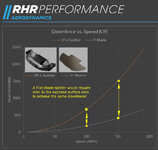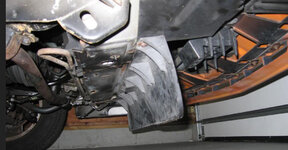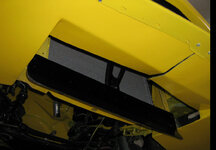69427
The Artist formerly known as Turbo84
- Joined
- Mar 30, 2008
- Messages
- 3,077
- Reaction score
- 38
Mike:
if you are same gent who's seeking (on another forum) OE valve spring info for your 12363392 bowtie heads, I actually have the real specs but cannot post on that forum.
To begin with, the specs below are found within the 2006 GM Perfomance Parts catalog:
12363392 head's spring seat diameter is 1.550" (Not the spring OD)
dual valve spring is GM pn 12462970
spring OD = 1.514"
installed height 1.940"
pressure (aka seat) at 1.940" = 140 psi
solid height = 1.200"
average spring rate = 325 psi
head x390 (cousin to your x392) is virtually same head but has larger (heavier) 2.25" OD intake valve (your x392 are 2.19" OD).
Those x970 springs are OE in both 390 & 392 heads. And, those x970 springs are OE in Both ZZ454 and ZZ502 heads and both of those motors have OE Roller Cams & OE Roller Lifters. However, as you know, GM OE roller lifters have No link bars; thus are lighter than retrofit rollers with link bars.
lastly some of those leading "experts" on that other forum are FOS and are faking lots of it and have successfully snowed an army of sycophants. Not a thing wrong with contacting PAC, but I'd first ask your cam manufacturer what its spring recommendation is. No surprise the know it alls couldn't come up with any real, correct data. BTW, I note B2B hasn't posted on that other forum in about a year; is he OK? pray he is.
Jack, yes, I'm that guy (gent might be a bit of a stretch
That is exactly the info I am looking for! If I understand things correctly, Chevrolet appears to have kept the same springs/specs from the initial introduction of those heads up through the introduction of the ZZ series of big block crate motors, which use the same cam and lifters I'm currently installing in my engine.
I haven't heard from B2B in quite some time, but I semi-regularly correspond with a mutual friend out in California. I'll inquire about B2B's welfare.
Thank you (profusely!) for this information. This issue has been stalling my effort to get the engine put together and thrown back in the car. Please do me a favor, and keep in touch. I'd like to buy you a beer or lunch sometime if the opportunity arises.
(VM guys: Please excuse the momentary topic drift here. I have been looking for the information that Jack provided and have been failing in the process. Jack's help is enabling me to get the car back together in time for this spring's events.
I now return you to your regularly scheduled topic.)




